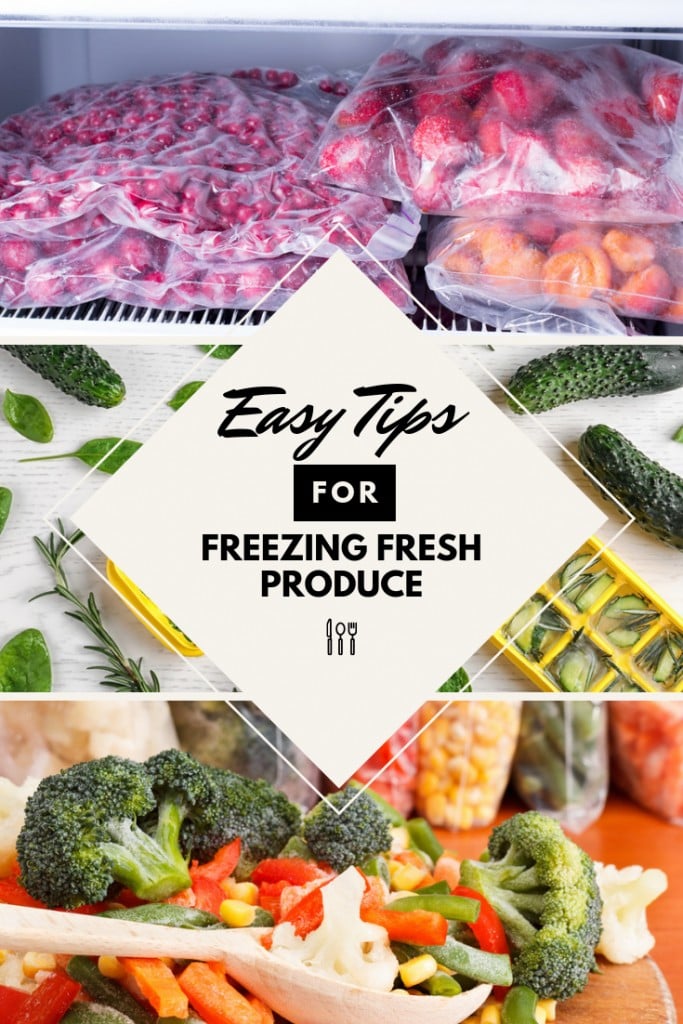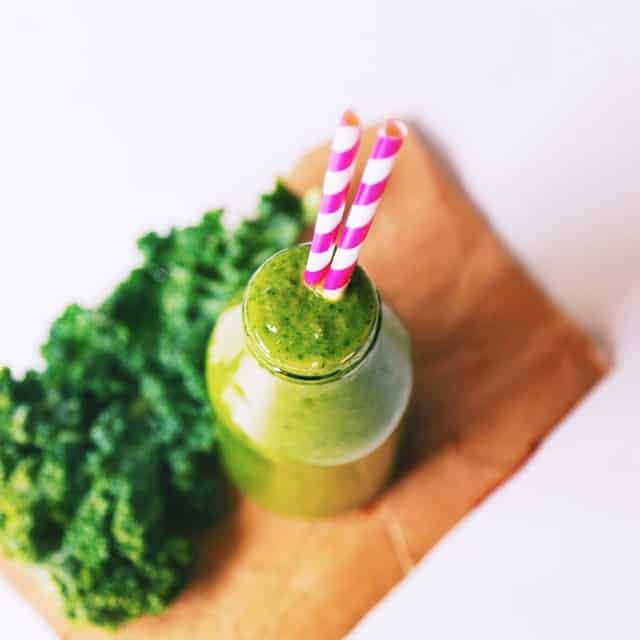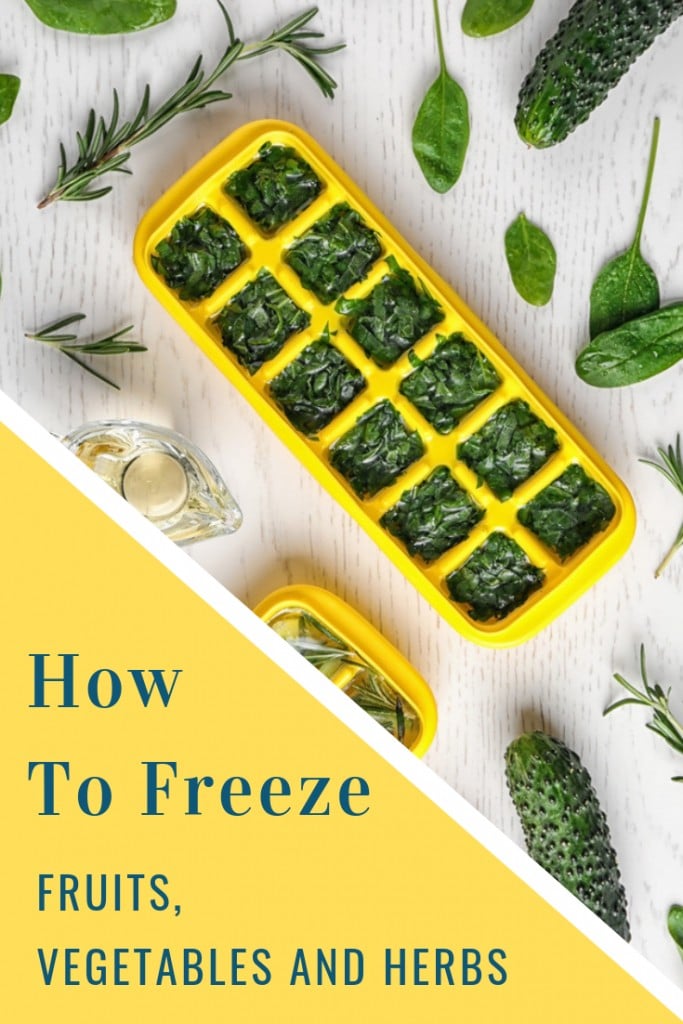Have extra produce from the garden? Just freeze it! Store your summer harvest in your freezer to enjoy all year long. Freezing fruits and vegetables is one of the easiest ways to preserve food, however, there are a few key things to keep in mind. These handy tips for freezing produce will help ensure that your harvest tastes just as good in November as it did in July!
Posts feature partner companies & may be sponsored. Post contains affiliate links & I will be compensated if you make a purchase after clicking on links. As an Amazon Associate I earn from qualifying purchases.
Table of Contents
Benefits of Freezing Produce
One of my favorite things about summer is the abundance of fresh produce available. If you are not a fan of gardening yourself, farmers’ markets make it easy to find locally grown fruits and vegetables.
Stocking up on fresh produce during the summer and freezing it can save you quite a bit of money as the prices of produce go up during the winter season.
Love these tips for freezing produce? Read these food preservation tips, too:
- Preserving Blueberries: My First Attempt at Canning! It wasn’t perfect but they were still delicious!
- A Home Preserving Guide for Food Preservation: You definitely want to do some research before you get started.
- How to Preserve Fresh Herbs for Maximum Flavor.
If you enjoy gardening, freezing your harvest can be helpful if you don’t have a crop that is particularly bountiful. For example, my rhubarb grows slowly, allowing me to only harvest one or two stalks a week.
By freezing rhubarb all summer, I have enough to last me until the next batch or have the ability to use it in recipes come fall and winter. Freezing organic foods helps cut back on the grocery budget when things are bought in bulk when they are on sale.
✯Don’t want to miss the next post?✯ Follow Turning the Clock Back on Facebook | Twitter | Pinterest Or join the private Facebook group for simple tips on going green!
Handy Tips for Freezing Produce
To ensure that your frozen produce stays fresh all winter long, follow the simple tips below!
Choose your produce carefully
Choose the freshest, blemish-free produce you can find. Thoroughly wash and dry it to remove pits, stems, leaves, and hulls before freezing. If you decide to use a special produce wash, make sure it is all-natural. Aunt Fannies produce wash for fruits and vegetables is a good choice.
Cut carefully
Cut all your produce into approximately the same-sized pieces. This saves time as you prepare meals allowing you to simply drop the food of your choice into your recipes.
Flash freeze
If you’re freezing fruit, place it on a cookie sheet as individual pieces and flash freeze for 2 to 3 hours. Flash freezing preserves the natural juices and flavors of food by freezing it quickly. Use a spatula to transfer the frozen fruit to a freezer-safe bag and put it back in the freezer. Skip the disposables and try Reusable Freezer Gallon Bags.
Freezing vegetables can be a little trickier than freezing fruits. Some are best frozen raw, while others freeze best after being cooked, so be sure to research carefully to ensure the best results.
How to freeze herbs
Herbs can be pureed in a small amount of water and frozen in silicone ice cube trays. Pop the cubes out of the tray and store them in freezer bags. When you want to add fresh herbs to a soup or stew, just toss in an herb cube!
Be careful what you freeze in
Make sure the containers you choose to freeze your produce in are freezer safe. When using plastic freezer bags, remove as much air as possible before sealing.
Date your freezer containers for freshness
Store frozen fruits for up to one year and vegetables for about 18 months. Storing produce longer than this may cause changes in flavor. Put the date on the containers and note what type of food they contain before freezing! You might want to invest in some Removable Freezer Labels. No sticky tape residue or marker left behind.
Monitory your freezer temperature
Keep a freezer thermometer in your freezer to make sure it is maintaining the proper temperature. The ideal temperature for keeping food frozen is 0°F (-18° Celsius).
Adjust your expectations
Frozen produce will often have a slightly different texture than fresh produce. Use frozen berries in smoothies or frozen vegetables in soups rather than eating them alone as you might with fresh produce.

How to Freeze Vegetables
Most vegetables need to be blanched before freezing, What does ‘blanching’ mean? The term ‘blanch’ means to briefly cook in boiling water.
To blanch fresh vegetables, bring 1 gallon of water per pound of prepped vegetables (about 2 cups) to a boil in a large pot. Add the vegetables, cover, return to a boil and cook. Then, transfer the vegetables to a large bowl of ice water. Drain well and pat dry.
Why blanch vegetables? Blanching kills enzymes that can alter the color, flavor, and nutrients in fresh vegetables. Blanching also destroys bacteria and other nasties that might be on the surface.
Once you have dried off your blanched vegetables, pack them snugly to avoid air contact.
Can you freeze fresh vegetables without blanching? You can, however, they won’t last as long so use them within 6 to 8 weeks. If you are trying to eat healthy on a budget, freezing fresh foods when they are on sale is a great way to eat more vegetables without going broke.

DIY Smoothie Freezer Packs
Freezing fresh fruit can save you a lot of time and money. Taking time to make breakfast at home can also go a long way toward reducing your carbon footprint. DIY Smoothie Freezer Packs are the answer to your ‘fast and portable’ meal needs.
Making them up ahead of time is incredibly easy. Make sure to follow the tips for freezing produce that I shared above when assembling your smoothie freezer packs.

The ingredients for these green smoothies are stored in quart-sized freezer bags. Stock up on frozen fruit and greens when they are on sale or in season. Cut the fruits fairly small and layer them in the bags with the greens.
Label them with the date and lay them flat in the freezer. If you don’t have a high-powered blender, skip the greens and just stick with fruit instead.
A general guideline to follow is 3 cups of frozen fruit and 2 cups of fresh spinach or other greens. Puree those with 1 to 1 1/2 cups of liquid for 2 good-sized smoothies.
Simple Green Smoothie Recipe (amount PER freezer bag)
- 1 cup pineapple, chopped
- 2 cups fresh spinach
- 1 cup mango, chopped
- 1 banana, peeled and sliced
Place ingredients in quart-sized freezer bags. Squeeze out leftover air and lay it flat in the freezer.
To make your frozen fruit and vegetable smoothies, place the contents of one package into a high-powered blender. Add 1 to 1/2 cups of liquid (juice, almond milk, coconut water, soy milk, etc). Then, puree on high until smooth.
More Posts You Might Like
Don’t throw away those food scraps after you are done meal-prepping! Check out my post on 5 easy things to do with food scraps for some frugal kitchen fun!
In an ideal world, we would all eat organic at every meal, however, it can get pricy. Read my tips on how to save money on organic food and start adding more of it to your grocery cart each week.
And remember, growing your own food is a great way to save money on produce. Don’t miss my post on what to plant in November, both inside and out. Grow food and save money!
Final Thoughts
Buying seasonal produce, fresh from the market is ideal, however, fairly unrealistic for most people year-round. I try to shop sales, stock up, and freeze produce at home whenever possible. By keeping an eye on prices and buying in bulk, you can eat healthier without going broke.

Diane is a professional blogger and nationally certified pharmacy technician at Good Pill Pharmacy. She earned her BS in Microbiology at the University of New Hampshire and has worked in cancer research, academics, and biotechnology. Concern over the growing incidence of human disease and the birth of her children led her to begin living a more natural life. She quickly realized that the information she was learning along the way could be beneficial to many others and started blogging and freelance writing to share this knowledge with others. Learn more about her HERE.


Good timing. I just happened to buy some of these bags at the store yesterday with plans as you so nicely instructed me.
I tried to PIN this, but the image does not work.
Im sorry! Pinterest has been a bit wacky for me today but I will see if I can figure out what the issue is!